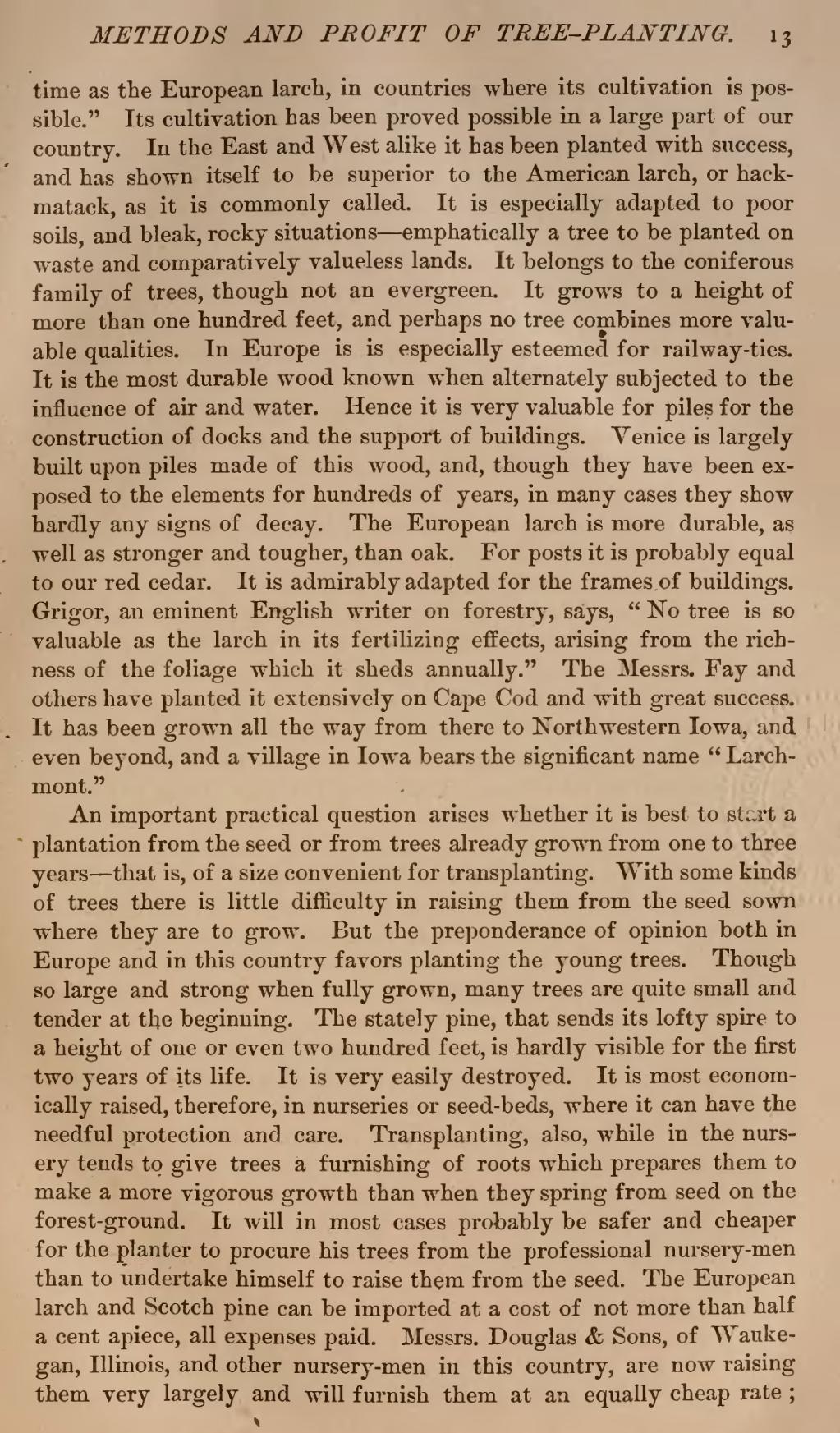time as the European larch, in countries where its cultivation is possible." Its cultivation has been proved possible in a large part of our country. In the East and West alike it has been planted with success, and has shown itself to be superior to the American larch, or hack-matack, as it is commonly called. It is especially adapted to poor soils, and bleak, rocky situations—emphatically a tree to be planted on waste and comparatively valueless lands. It belongs to the coniferous family of trees, though not an evergreen. It grows to a height of more than one hundred feet, and perhaps no tree combines more valuable qualities. In Europe is is especially esteemed for railway-ties. It is the most durable wood known when alternately subjected to the influence of air and water. Hence it is very valuable for piles for the construction of docks and the support of buildings. Venice is largely built upon piles made of this wood, and, though they have been exposed to the elements for hundreds of years, in many cases they show hardly any signs of decay. The European larch is more durable, as well as stronger and tougher, than oak. For posts it is probably equal to our red cedar. It is admirably adapted for the frames of buildings. Grigor, an eminent English writer on forestry, says, "No tree is so valuable as the larch in its fertilizing effects, arising from the richness of the foliage which it sheds annually." The Messrs. Fay and others have planted it extensively on Cape Cod and with great success. It has been grown all the way from there to Northwestern Iowa, and even beyond, and a village in Iowa bears the significant name "Larchmont."
An important practical question arises whether it is best to start a plantation from the seed or from trees already grown from one to three years—that is, of a size convenient for transplanting. With some kinds of trees there is little difficulty in raising them from the seed sown where they are to grow. But the preponderance of opinion both in Europe and in this country favors planting the young trees. Though so large and strong when fully grown, many trees are quite small and tender at the beginning. The stately pine, that sends its lofty spire to a height of one or even two hundred feet, is hardly visible for the first two years of its life. It is very easily destroyed. It is most economically raised, therefore, in nurseries or seed-beds, where it can have the needful protection and care. Transplanting, also, while in the nursery tends to give trees a furnishing of roots which prepares them to make a more vigorous growth than when they spring from seed on the forest-ground. It will in most cases probably be safer and cheaper for the planter to procure his trees from the professional nursery-men than to undertake himself to raise them from the seed. The European larch and Scotch pine can be imported at a cost of not more than half a cent apiece, all expenses paid. Messrs. Douglas & Sons, of Waukegan, Illinois, and other nursery-men in this country, are now raising them very largely and will furnish them at an equally cheap rate;
